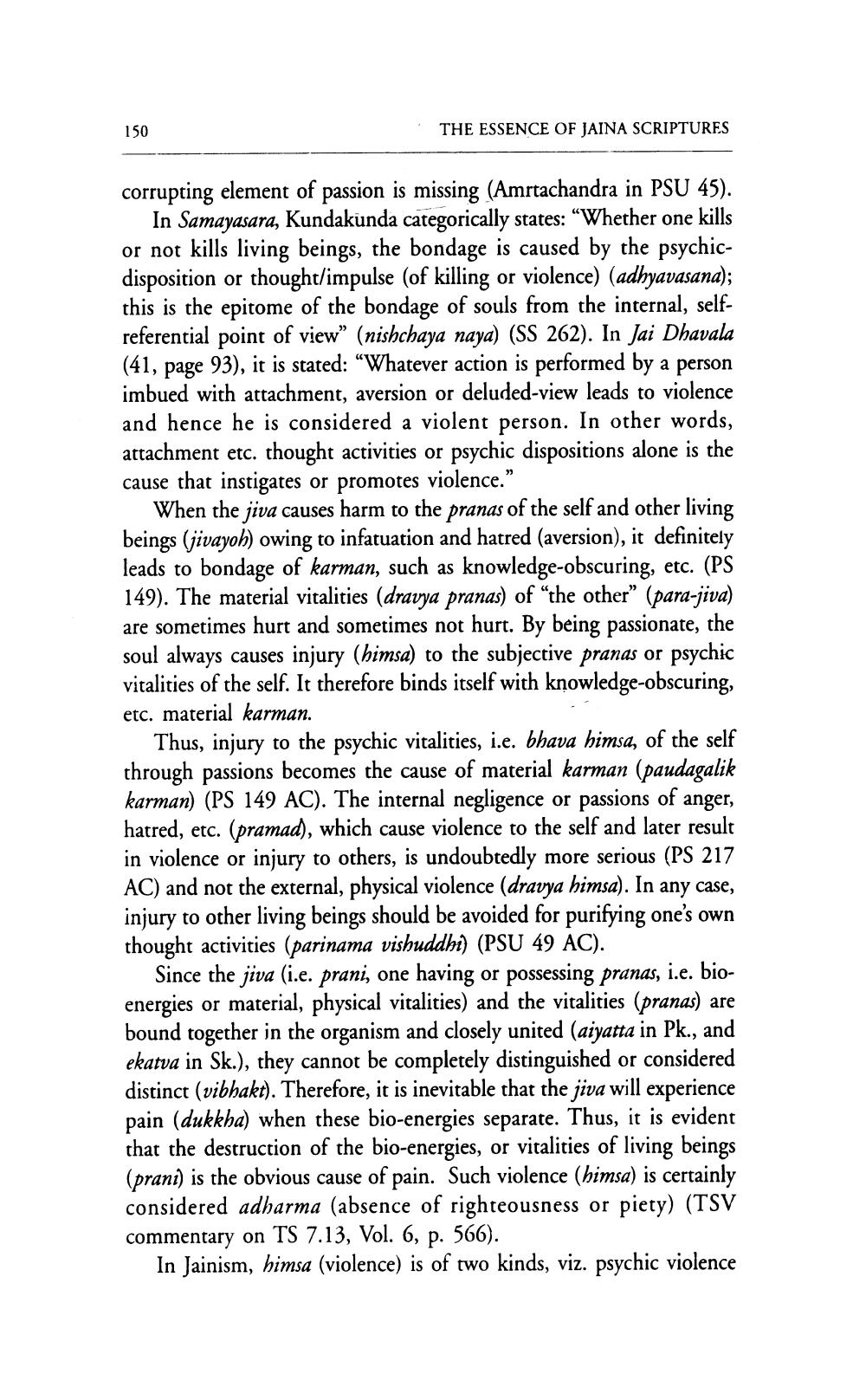________________
150
THE ESSENCE OF JAINA SCRIPTURES
corrupting element of passion is missing (Amrtachandra in PSU 45).
In Samayasara, Kundakunda categorically states: “Whether one kills or not kills living beings, the bondage is caused by the psychicdisposition or thought/impulse (of killing or violence) (adhyavasana); this is the epitome of the bondage of souls from the internal, selfreferential point of view” (nishchaya naya) (SS 262). In Jai Dhavala (41, page 93), it is stated: “Whatever action is performed by a person imbued with attachment, aversion or deluded-view leads to violence and hence he is considered a violent person. In other words, attachment etc. thought activities or psychic dispositions alone is the cause that instigates or promotes violence.”
When the jiva causes harm to the pranas of the self and other living beings (jivayoh) owing to infatuation and hatred (aversion), it definitely leads to bondage of karman, such as knowledge-obscuring, etc. (PS 149). The material vitalities (dravya pranas) of “the other” (para-jiva) are sometimes hurt and sometimes not hurt. By being passionate, the soul always causes injury (himsa) to the subjective pranas or psychic vitalities of the self. It therefore binds itself with knowledge-obscuring, etc. material karman.
Thus, injury to the psychic vitalities, i.e. bhava himsa, of the self through passions becomes the cause of material karman (paudagalik karman) (PS 149 AC). The internal negligence or passions of anger, hatred, etc. (pramad), which cause violence to the self and later result in violence or injury to others, is undoubtedly more serious (PS 217 AC) and not the external, physical violence (dravya himsa). In any case, injury to other living beings should be avoided for purifying one's own thought activities (parinama vishuddhi) (PSU 49 AC).
Since the jiva (i.e. prani, one having or possessing pranas, i.e. bioenergies or material, physical vitalities) and the vitalities (pranas) are bound together in the organism and closely united (aiyatta in Pk., and ekatva in Sk.), they cannot be completely distinguished or considered distinct (vibhakt). Therefore, it is inevitable that the jiva will experience pain (dukkha) when these bio-energies separate. Thus, it is evident that the destruction of the bio-energies, or vitalities of living beings (prani) is the obvious cause of pain. Such violence (himsa) is certainly considered adharma (absence of righteousness or piety) (TSV commentary on TS 7.13, Vol. 6, p. 566).
In Jainism, himsa (violence) is of two kinds, viz. psychic violence




